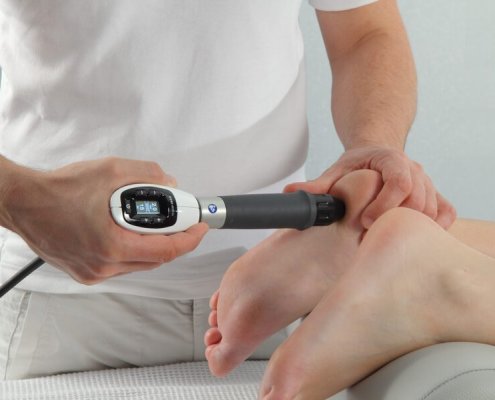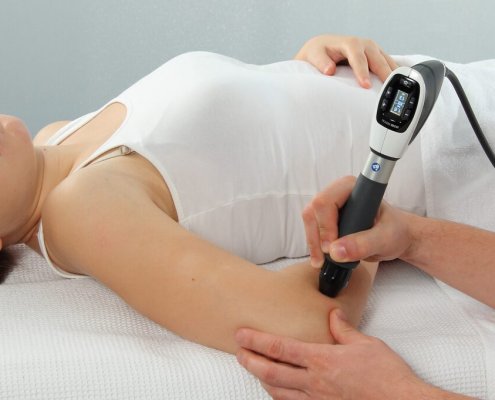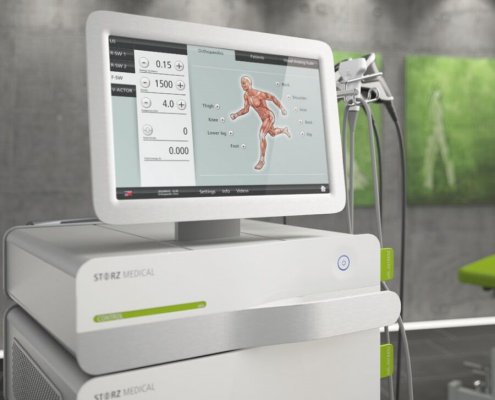Shockwave Therapy
against chronic pain
The focused and radial extracorporeal shockwave therapy (ESWT) is a gentle and innovative treatment method.
When does Shockwave Therapy make sense?
- Heel spur (plantar fasciitis)
- Tennis elbow (epicondylitis humeri radialis)
- Golfer’s elbow (epiconylitis humeri ulnaris)
- Calcareous shoulder (tendinitis calcarea)
- Painful Achilles tendon (achillodynia)
- Hip bursitis (Buristis trochanterica)
- Patellar tip syndrome
- Tendon inflammation (e.g. adductors)
- Muscle hardening (as a trigger point treatment)
What are shock waves?
The treatment was first used successfully for kidney stones in 1980 and has been continuously developed since then.
Shock waves are high-energy pressure waves. Shock waves generate small traumas (microtraumas) in the tissue and thus lead to the sprouting of new blood vessels. They activate the self-healing powers in the body and promote the body’s own healing process. The shock wave therapy improves the metabolism and damaged tissue begins to regenerate more intensively.
In shock wave therapy, a distinction is made between focused and radial shock waves. While radial shock waves create pressure on the skin, focused shock waves have a deep-acting effect – the stimulus of these shock waves causes a chronic inflammation to be reduced in a targeted manner by the body.
How is shock wave therapy performed?
Both types of shock waves are used in my ordination, but the focus is on the focused shock wave. This is used for the calcareous shoulder, tennis elbow, heel spur, bursitis and all tendinitis, as it leads to more intensive anti-inflammatory measures. The radial shock wave is used successfully for muscle hardening as a trigger point treatment.
The most modern equipment is used in the ordination. Calcium deposits in the shoulder area are treated with an ultrasound target.
How many applications are necessary?
How many applications are necessary varies from patient to patient and depends on the area of application (heel spur, tennis elbow, calcified shoulder, etc.), the severity of the disease and other factors. In most cases, a series of three sessions can be assumed.
For most patients, the first successes of the treatment can be felt and ascertained just a few weeks after the therapy.
What complaints do you have?
After a detailed diagnosis, I will work with you to plan your therapy.
Make an appointment in my ordination right away:
T: 01 587 21 31 or online




